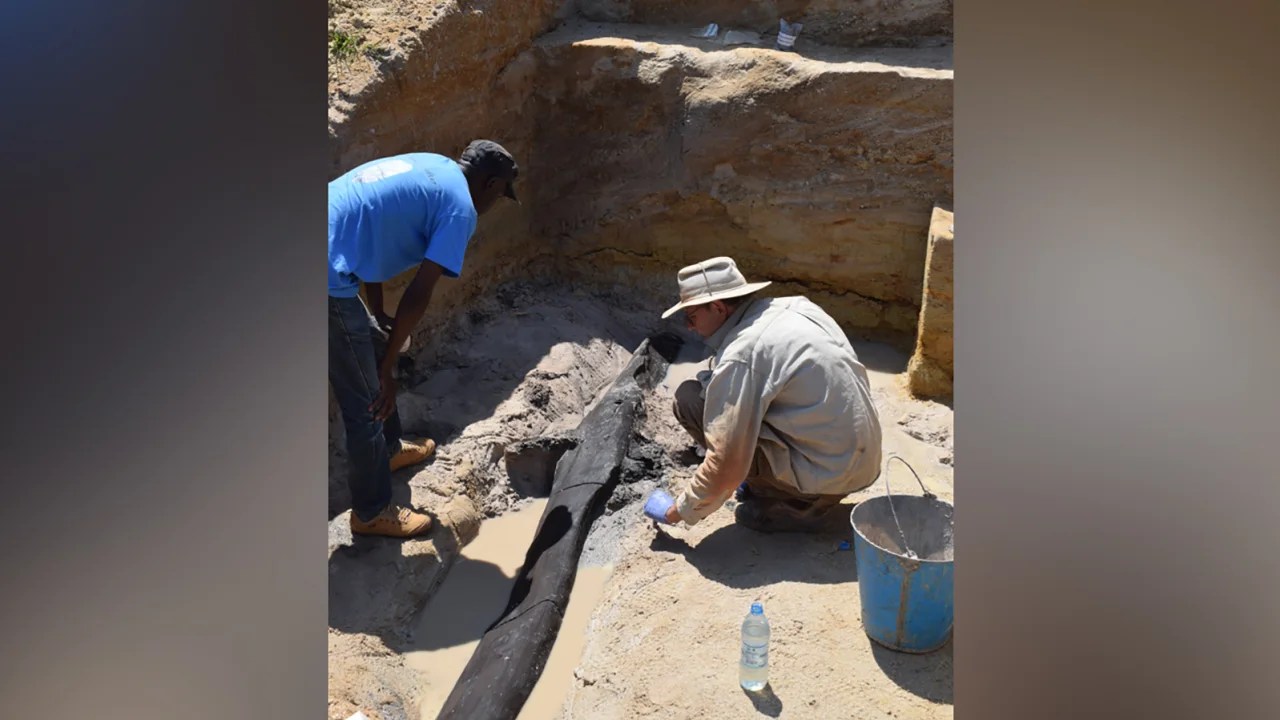Oldest Known Wooden Structure, Nearly Half a Million Years Old, Discovered by Archaeologists
A group of archaeologists has made a groundbreaking discovery, unearthing the oldest known wooden structure that is approximately half a million years old. The structure, consisting of two interlocking logs with a purposeful notch carved into the top piece, was found on a riverbank in Zambia. The cut marks on the logs were examined using stone tools, providing insight into how the logs were fitted together.
Geoff Duller, a professor at Aberystwyth University in the UK and part of the excavation team, suggests that the wooden structure served practical purposes such as a walkway, a dry storage platform for food or firewood, or as a foundation for a home. Additionally, wooden tools were discovered at the same site, further adding to the significance of the finding.
Preservation of wooden artifacts is extremely rare in the archaeological record, particularly for sites of this age due to organic material decay. However, the high water levels and fine sediments that covered the structure at Kalambo Falls in Zambia helped to preserve the wood. Duller notes that this discovery challenges the prevailing notion that Stone Age humans led a largely nomadic lifestyle. The reliable water source and abundant food surrounding Kalambo Falls suggest the possibility of a more sedentary existence for these ancient humans.
The wooden structure, which has no comparable parallel in the archaeological record, provides valuable insights into the capabilities and resourcefulness of our ancient ancestors. Compared to the previously oldest known wooden artifact, a polished plank fragment from Israel dating back 780,000 years, this discovery pushes the timeline of wooden structures almost 300,000 years earlier. It also challenges assumptions that Neanderthals were the first to build structures using bone or stalactites around 175,000 years ago.
To understand how the wooden structure was made, researchers examined the joining technique used and compared it to the children’s construction toy called Lincoln Logs, which utilizes square notches. The team made modern replicas of the stone tools found at the site and used similar density wood to recreate the structure, finding identical shape marks on the replicas. This confirmed that the joining of the wooden logs was done intentionally using stone tools and not a natural occurrence.
The dating of the wooden structure and tools was done using a technique called luminescence dating, as they were too old to be directly dated with radiocarbon techniques. This method estimates the last exposure of the wood to sunlight, placing the structure’s age at 476,000 years old. The wooden tools were dated back to 324,000 years ago. While the researchers are uncertain which ancient human species created the structure and tools, it is unlikely to have been made by Homo sapiens. The complexity of the structure suggests cognitive sophistication and the ability to plan and execute complex tasks, possibly requiring the use of language.
Archaeologist Dr. Annemieke Milks from the University of Reading in the UK commented that this discovery sheds light on when humans began to alter the planet for their own benefit. The findings also emphasize the role of wood as an important material during the Stone Age, a fact long suspected but now corroborated through this remarkable discovery.
This groundbreaking research, published in the academic journal Nature, highlights the remarkable abilities of our ancient ancestors and provides crucial insights into the early human history of structurally altering the environment.
